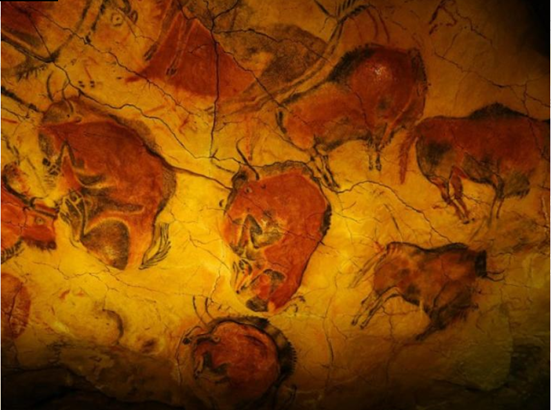
Admin News
by Dr. Gwyn Underwood, Superintendent
Today is the CIS Class of 2021 Graduation day.
Please join us for our virtual Graduation Ceremony tonight, premiering at 5 pm (link will be sent to registered email addresses).
CONGRATULATIONS Class of 2021!

Building your transition RAFT!
As we near the end of the school year, we are all faced with various levels of pending change. Students are finishing up their year and some families will be leaving, so there are upcoming changes we are being presented with. During this time of change, research has suggested that it is beneficial to consciously consider how transitions can affect us, and our family. The following is an adaptation of an article I have shared in the past so we can consider how to build a transition raft!
David Pollock and Ruth Van Reken* outline the transition process as a normal process that uses the following associated feelings:
| ENGAGEMENT | LEAVING | TRANSITION | ENTERING | RE-ENGAGEMENT |
| Settled | Unsettling | Chaos | Resettling | Settled |
| Commitment | Preparation | Statelessness | Observation | Commitment |
| Status | Celebration | Anxiety | Introduction | Status |
| Intimacy | Denial | Vulnerability | Intimacy |
It is helpful to consider emotions involved during transitions, so as to understand and be ready to deal with any stress these emotions may cause. Failure to cope with these will result in an unhappy transition and poor re-engagement in your new environment. For students, this will certainly affect their social and academic achievements.
 Dr. Pollock also developed the acronym and visual image “RAFT” to help explain pre-departure processes needed for successful transitions. Here is a summary for your reference:
Dr. Pollock also developed the acronym and visual image “RAFT” to help explain pre-departure processes needed for successful transitions. Here is a summary for your reference:
Reconciliation – Begin building your raft by asking yourself if you have any relationships that need mending. Is there any unfinished business between you and someone you are in a relationship with? This is the time to give and receive forgiveness. Bitterness and regret stemming from lack of closure and resolution inhibit good grief and adjustment to a new location.
Affirmation – This is the time to thank the people who have been involved in your life. Affirm the relationships you have made and what they have meant to you. Take the time to tell people what you have learned from them and how grateful you are for them. Try to leave as little unsaid as possible when you leave a place.
Farewells – Say good-byes to people, places, pets, and possessions that have mattered to you. Take lots of pictures. Take the time to say culturally appropriate good-byes. Some cultures require a lengthy departure process. Particularly difficult farewells are the ones that are generally rushed or put off, so plan ahead and give the farewell its due.
Think destination – Think and dream about where you are going and what it will be like. Be very honest about the expectations you have for the people and situations that you are going to. Be honest with yourself about how you feel about this transition. Think ahead to what scares you or excites you about where you are going. Research the realities of your destination. If at all possible, put concrete plans in place.
As we move into our last 2 weeks, please take time to build your RAFT as you transition, and go out of your way to help your friends build theirs. Consider how change may impact the feelings of all of our students whether they are leaving or not, as the process will help them face new situations as they move into a new grade, and as some of their friends and teachers leave.
Have a great weekend!
*References & Credits:
– Third Culture Kids: The experience of growing up among worlds by David C. Pollock and Ruth E. Van Reken
– Adapted from: http://theirrationalseason.blogspot.com/2008/04/raft.html
– Class of 2021 Photo credit: Shayna Douglas on Unsplash.com
– Raft Photo credit: Joshua Earle on Unsplash.com
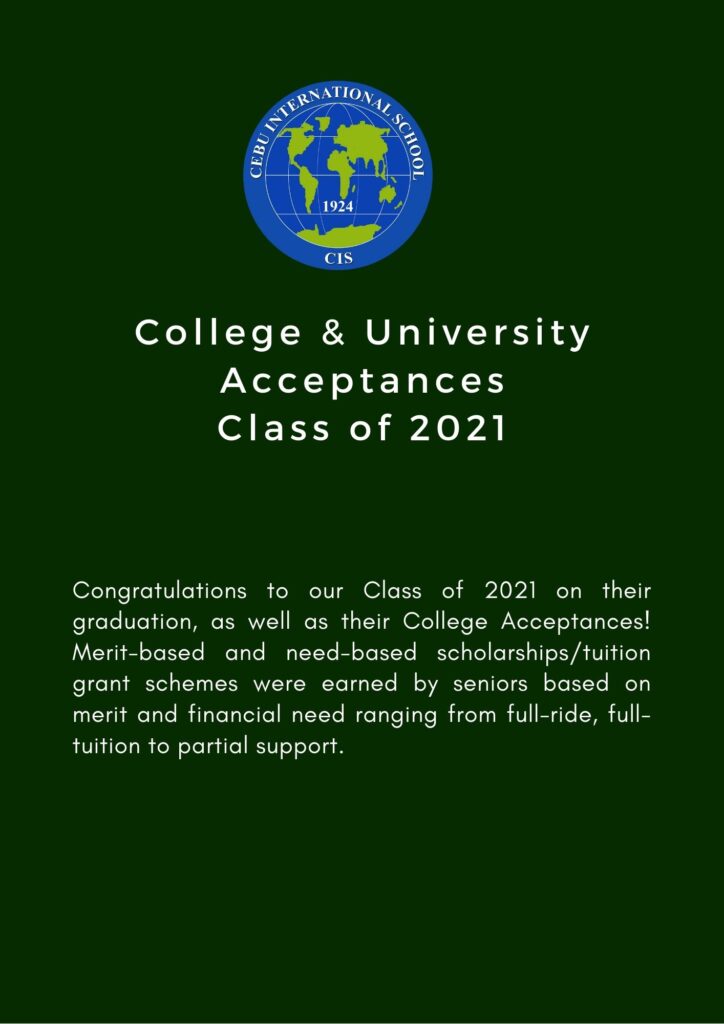

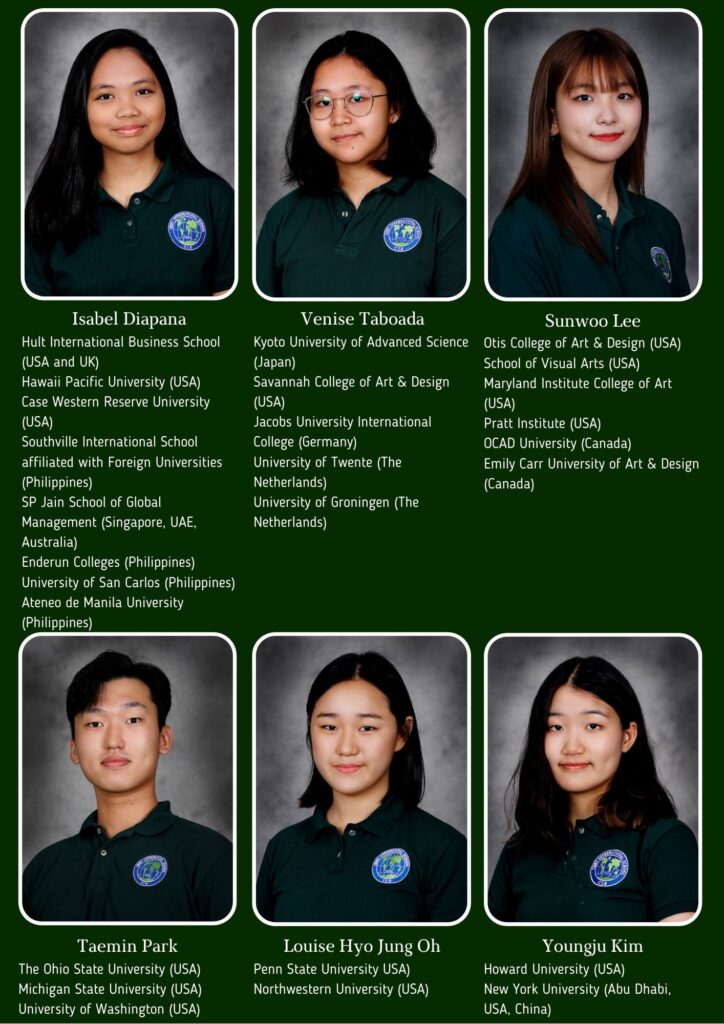

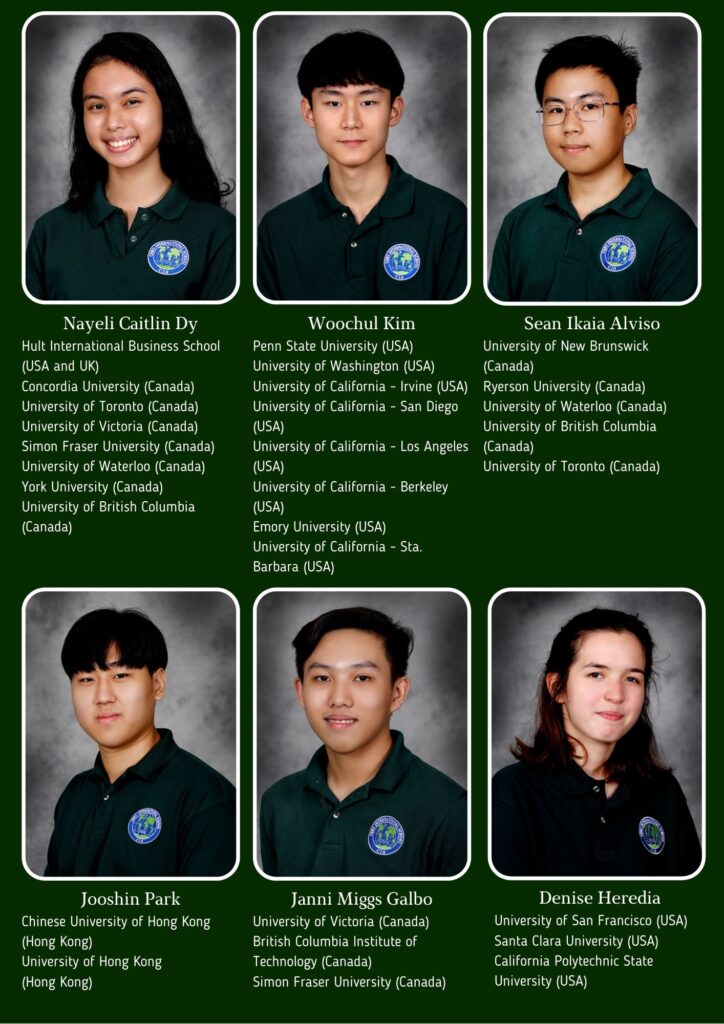
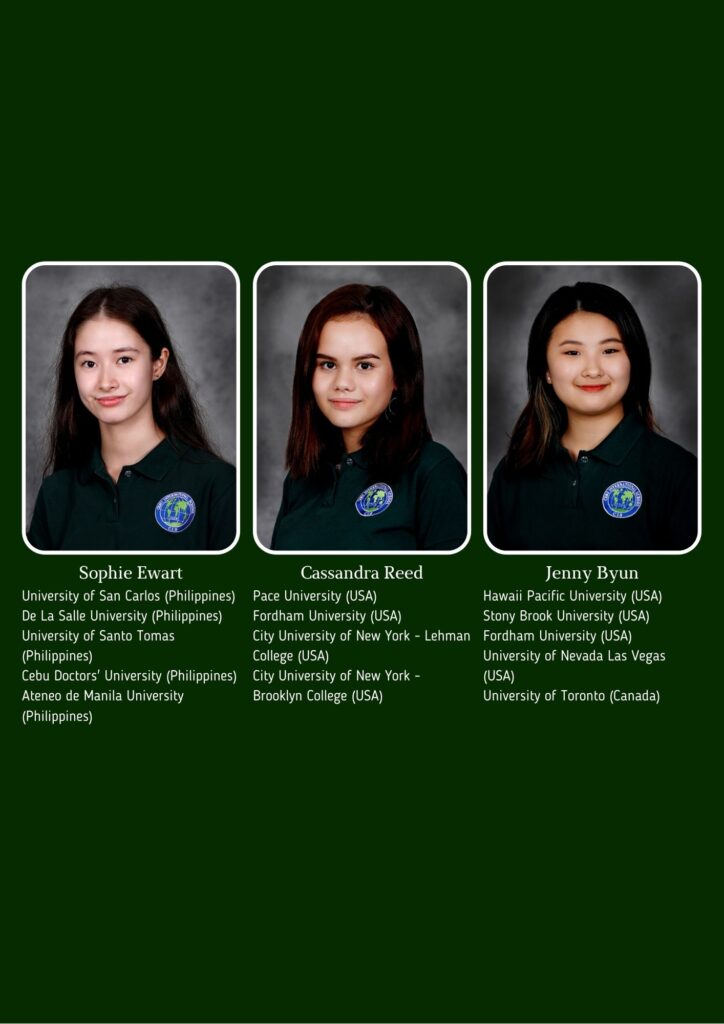
Elementary News
by Mr. Glenn Davies, Elementary School Principal
Dear CIS Community,
The final days of school for the 2020/2021 academic year are falling upon us. This past week has been a wonderful opportunity to review the learning growth of our students as they have prepared for the Celebration of Learning. I know our teachers valued the opportunity to meet with each family who signed up for the Three-Way Conference, and we know our students were excited to share their Student-Led Conference sections of the day with you. As we draw toward the end of the year it is also promising that we see progress being made that will facilitate the return to the school campus next year, although this may be gradual at first, with a hybrid learning model likely being employed in the initial stages as described by Dr. Underwood in previous publications. We have all certainly made the very best of the last twelve months and we are all looking forward to being together as a community again. Currently our teachers are completing the end of year formal written reports and these will be released to the community on the afternoon of Friday 4th June. Also next Friday, the elementary school will host the final ES assembly of the year and currently our student council team is working hard on creating this production.
Amidst the end of the year business, it is valuable for us all to reflect on the incredible achievements of the past twelve months. Both our CIS faculty and students have let no obstacle get in the way of their learning. Each class has a virtual classroom which reflects their school classroom and video conferencing has become the norm for us all, enabling us all to feel connected despite the physical barriers. I am incredibly proud of what each student has accomplished, they way each family has enabled this, and the perseverance and commitment of our CIS teaching faculty. We never stop learning.
Summer Family Directory
Over the summer period there are likely to be a number of families remaining in Cebu. Some of these families may be seeking to have playdates or social contact with other families. To assist with this CIS would like to provide an opt-in directory for those families who wish to connect. Only families who choose to share their contact details will be shared in this closed group.
If you would like to share your contact information, please send an email to the Elementary Secretary (lromano@cis.edu.ph ) before June 9th, the final day of school. Please include the following information.
Student Name:
Student’s Class:
Contact name and phone number: Relationship to student:
Learning in Visual Arts
Grade 5 has been exploring different Art Movements such as Impressionism, Expressionism, Cubism and Pop-Art. In our Seesaw learning engagement, we identified the characteristics of each movement and looked at examples from some famous artists. The students then created an artwork inspired by that particular art style.
Here are some of their artworks:
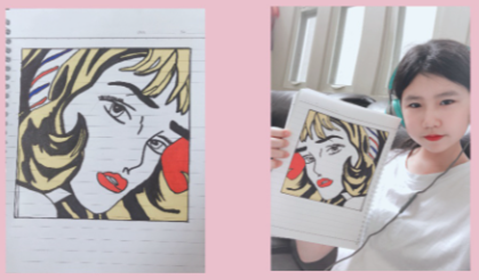
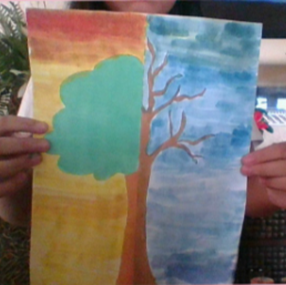
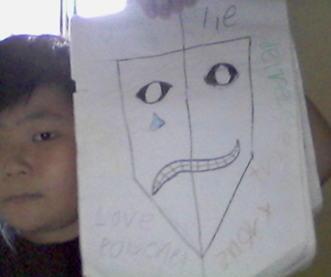

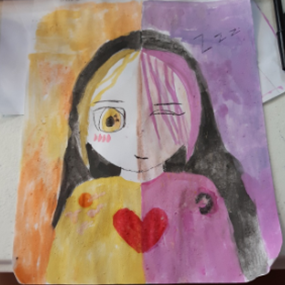
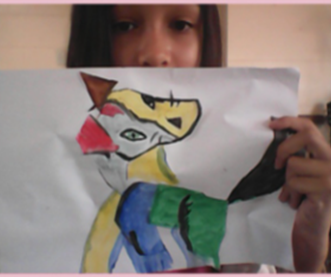
The Grade 4 students have been practicing to draw and shade shapes. As a culminating activity we moved towards creating 3D Shape sculptures. These are sculptures made using any materials that were available in the household with a goal of creating 3D Shapes.

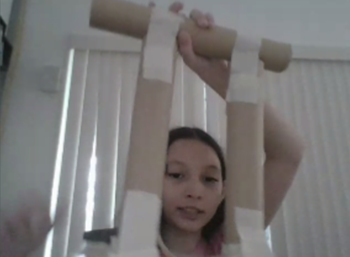
For Celebration of Learning Day, the Grade 2 students had the choice of drawing one family member, focusing on facial expression or body gesture, or drawing their whole family, while making sure that the whole family sketch had a background, middle ground and foreground.


Middle and High School News
by Mr. Dale Wood, Middle & High School Principal
We are approaching the end of the academic year in MHS, and I wanted to thank all of our parents for their support and trust and for partnering with the teachers and administration this year. We appreciate your trust and support. Given the unique challenges of remote learning, we are so proud of our students and what they have been able to accomplish this year.
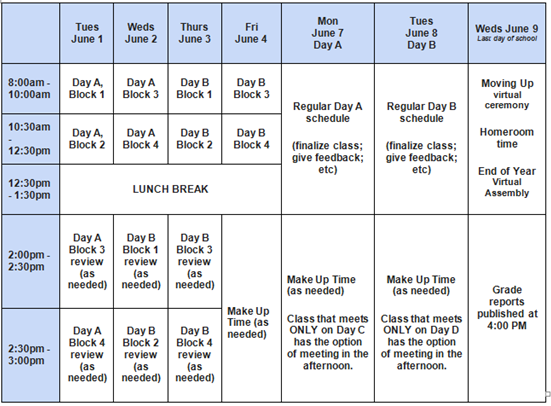 I am sharing our End of Year Schedule for MHS, including our Assessment Schedule for next week. The MHS teachers have collaborated to create a schedule that we feel allows us to assess student learning appropriately while not overburdening them with too much work being due on any given day. Although our students are sometimes anxious about assessments (especially tests), these can actually be seen as an opportunity for students to powerfully demonstrate what they have learned and what they can do. With our shift to more product and performance assessments this is now the case more than ever. Students striving to reach the explicitly laid out Assessment Criteria means that they have a clear target to aim for as they complete these assessments.
I am sharing our End of Year Schedule for MHS, including our Assessment Schedule for next week. The MHS teachers have collaborated to create a schedule that we feel allows us to assess student learning appropriately while not overburdening them with too much work being due on any given day. Although our students are sometimes anxious about assessments (especially tests), these can actually be seen as an opportunity for students to powerfully demonstrate what they have learned and what they can do. With our shift to more product and performance assessments this is now the case more than ever. Students striving to reach the explicitly laid out Assessment Criteria means that they have a clear target to aim for as they complete these assessments.
The following schedule will apply to all students in grades 6-11 and to their respective courses. Each course will be allocated a 2-hour time slot for students to complete and/or submit their end-of-semester assessments. To help our students balance their final assessments, no additional assignments will be due during the period of June 1-4, unless it falls on the designated assessment day for that specific course according to the schedule above. This will serve to support our students’ success in all of their academic courses.
In these final weeks, our students have continued to engage in creative and powerful learning experiences, crafted by their teachers, to help their understanding of course concepts to be deep, relevant, and meaningful.
Physical and Health Education
COVID19 Awareness – A talk with a COVID19 Survivor
On May 24, our Grade 8 and 9 students had an opportunity to listen to a Covid 19 survivor- Mr. Jason Cardente who is from Mindanao and suffered a severe case of covid 19. Here’s a short summary of the experience written by Alessandra Gabrieblle “Bea” F. – Grade 9.
In P.H.E. class today we were visited by Sir Jason Cardente, a person who had a severe case of COVID-19. He covered many topics such as how he contracted the virus, his mental health during that time, and tips for prevention. This experience was very insightful and he taught us a lesson on how serious this pandemic is. Although I knew the virus was deadly, this new perspective opened my eyes to how it can affect people’s lives. This made me realize that anyone can get the virus and it is better to be safe than sorry. I will move forward by always taking the proper precautions and warning others about the gravity of the pandemic.
Something that struck me the most during the talk was the fact that he went under a stage of deep sadness and thought of ending the pain he was suffering permanently. This struck me the most because it showed how much suffering he went through both mentally and physically and yet did not give up, but instead listened to the experts and followed all their advice. The way he faced and fought covid also inspired me. I am glad that Sir Jason was able to visit our class as I think that his story is one of great importance. It is crucial that students hear this kind of talk online because some students do not take the virus seriously and this can be a real eye-opener for those who believe they are immune to the virus. It can help students fully understand this threat and protect themselves from it. This relates to our physical health education class because we have been discussing updates on the coronavirus and how it affects people around the world. Additionally, it relates to our current fitness unit because the talk teaches us to prioritize our health and take care of our bodies during this seemingly bleak time.
Grade 11 Spanish
The Cave of Altamira represents the apogee of Paleolithic cave art that developed across Europe, from the Urals to the Iberian Peninsula from 35,000 to 11,000 BC. Because of the cave’s deep galleries, isolated from external climatic influences, these caves are particularly well preserved. The caves are inscribed as masterpieces of creative genius and as humanity’s earliest accomplished art.
This cave in northern Spain is Nicknamed “the Sistine Chapel of paleolithic art”. We have used this artistic expression as a touchstone to understand a different aspect of Spain, and we have used it to answer some deeper questions like: why did early humans paint on cave walls?
Shark-Tank Week in Grade 10 Business
by Mr. Michael Stewart, MHS Business Teacher
This week, our student–entrepreneurs pitched their ideas for their new business products or services to the ‘Sharks’ (Ms. Cornet, Ms. Condor, and Mr. Denton – our sincerest thanks to them), seeking investments in the companies and product/services that they’ve been developing throughout the Quarter. Students were required to incorporate what they’ve learned over the semester- about supply and demand, competition, marketing, market research, pricing, and cost analysis– in order to convince the Sharks that they have hit upon the ‘next big thing’. The Sharks weren’t readily inclined to part with their ‘money’, asking challenging questions and 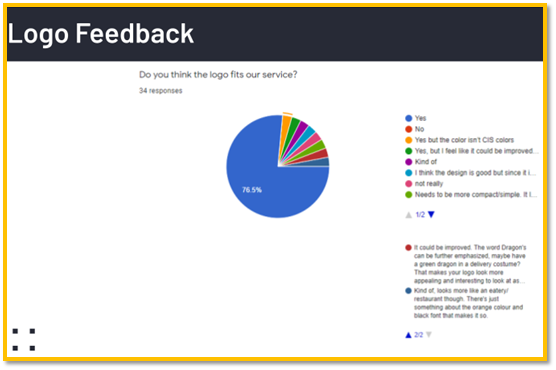 probing the pitches for oversights, but they were impressed by the knowledge and hard work so clearly on display. Here is one of the best pitches of the week, from Stefen and Edrigu. Their company – ‘Dragons’ Delivery’- had the Sharks circling immediately!
probing the pitches for oversights, but they were impressed by the knowledge and hard work so clearly on display. Here is one of the best pitches of the week, from Stefen and Edrigu. Their company – ‘Dragons’ Delivery’- had the Sharks circling immediately!
Click here for the link to their presentation
Here are a few slides from their presentation showing how they used feedback to refine their logo to attract more customers.
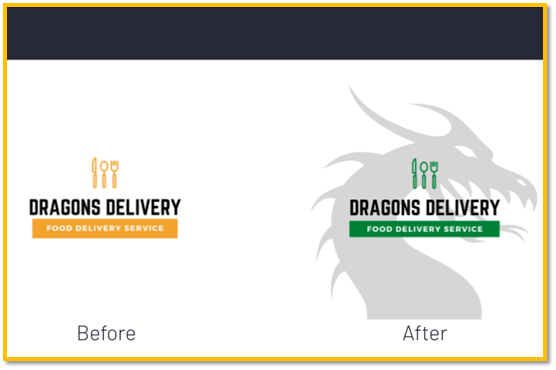

IB Business Management 11
by Ms. Emily Cornet, IB Management Teacher/IBDP Coordinator
During the final quarter of Grade 11, the IB Business Management students begin work on their Internal Assessment (IA), a required component of the IBDP course. For the IA, students need to create a research question which allows them to examine a real-world business.
Higher Level (HL) students must choose a business which they have access to, because the IA will require them to conduct primary research over the summer as they interview different internal stakeholders about a problem that the business is facing, and then formulate suggestions for how that business should resolve the problem.
Standard Level (SL) students will complete a secondary source-based commentary on an aspect of a business. The IA is actually one of the biggest differences in the HL and SL course for Business Management students, as the approach the student takes in their research differs greatly (primary research versus secondary research).
Thus far, students have created their Research Questions, and have formulated a proposal for what they will complete over the summer months when they do the bulk of their investigation.
Psychology 10
by Ms. Evangeline Villagonzalo, MHS Psychology Teacher
Psychology 10 is a semester-long course designed to give students a basic overview and understanding of the subject. Unit Two’s key concept centers on perspective, where students will explore how our brain processes the world around us through a study into the interaction of our basic senses, our prior experiences, and knowledge. Perspective is the position from which we observe situations, objects, facts, ideas, and opinions. It may also be associated with individuals, groups, cultures, or disciplines. Different perspectives can often lead to multiple representations, interpretations, and different perceptions. In this unit the students will explore how the human brain determines how we experience the world, and what impact it has on our daily decision making process.
Here are some of the student’s sample slides, drawings, and reflections:
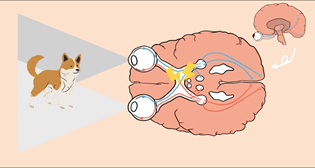 We learned about how the brain uses our past experiences (perceptual set) in order to dictate how we perceive the world. This unit had really opened my eyes to how our brain deciphers the sensations that are collected by our sense organs. Overall, it was really interesting to see everyone’s depiction of the processes of sensation and perception and how different illusions can trick our minds. – Selly
We learned about how the brain uses our past experiences (perceptual set) in order to dictate how we perceive the world. This unit had really opened my eyes to how our brain deciphers the sensations that are collected by our sense organs. Overall, it was really interesting to see everyone’s depiction of the processes of sensation and perception and how different illusions can trick our minds. – Selly
I learned that most of what we experience is determined by our mind. There’s a lyric of this song that goes “You don’t see with your eyes, you perceive with your mind.” and I never really understood that until now. Our perception of the world can definitely shape the life we live by influencing our perception. It opened my eyes up to how important our brain is for finding our way around the world, and that we must make this world more accessible for those whose brains function differently from ours. – Katrina

After all of our summative assessments and activities for this unit, I feel like I was able to obtain a deeper understanding about myself. I learned how we sense things on a day to day basis and how we perceive certain objects. I learned how and why we sometimes get tricked and that our senses have limitations. From one of our activities, The Man who Mistook, I was able to learn how different disorders affect perception. I found this study particularly interesting because I really wanted to understand why the man couldn’t detect faces but could detect objects and geometrical shapes really well. All of these have helped me understand the human body and behavior. – Heinz
In this unit I created a presentation about hearing. I went over the parts of the ear, sound waves, hearing loss and what to do to treat it, and more. This has helped me understand the world we live in as well and how to act in it. What I find most interesting about this unit is vision. I didn’t realize how much processes the eye has to go through to pass on images to the brain. There was so much to learn about it making me even more interested to learn about vision. – Andrew
I think the topic is especially interesting and insightful because it helps us understand ourselves through understanding the processes that take place in our minds and bodies. I learned to be more aware of my thoughts and actions. I realized that we cannot fully trust our senses because our mind can also perceive things as what they are not based on our past experiences and opinions. I found the illusion aspect the most interesting because we have yet to figure out how they really work since we are only stuck with a bunch of theories. – Reona
 My presentation focused on the somatosensory system which is the huge network that allows us to touch an object and interpret it with our brain and different receptors. It was meaningful to learn deeply about the process of how sensation and perception works in every second of our lives. – Thomas
My presentation focused on the somatosensory system which is the huge network that allows us to touch an object and interpret it with our brain and different receptors. It was meaningful to learn deeply about the process of how sensation and perception works in every second of our lives. – Thomas
Learning from the sensation and perception unit, I have realized how they are different and how they support the way we perceive things and the world around us. I better understand now how our senses work and why common visual illusions work. – Vicky

My personal favorite activity was the Man Who Mistook. I enjoyed the Man Who Mistook activity because the story was very interesting to read and answering the questions itself was also a fun activity to do. I specifically found this activity interesting because I watched a show that had a character with a similar disability and I didn’t think it was real until I read about the Man Who Mistook in psychology class. – Hayun
One thing I have found interesting about this topic is that our sense of smell is more linked to our memories and emotions than other senses. At first, I thought that our sense of vision relates better to our memories and emotions since we are under the impression of what we see. However, it has been proven that the nose and the sense of smell make you remember things. – Joo Ha
The TOK Exhibition 2021
by Mr. David Gibson, MHS TOK Teacher
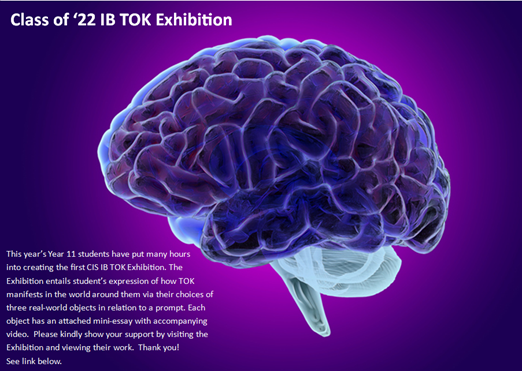 This year was a new and challenging year in TOK. For the first time the previous Presentation assessment had been dropped and the new TOK Exhibition introduced. It would also be an introduction coinciding with the adaptive and innovative requirements of the pandemic.
This year was a new and challenging year in TOK. For the first time the previous Presentation assessment had been dropped and the new TOK Exhibition introduced. It would also be an introduction coinciding with the adaptive and innovative requirements of the pandemic.
The Exhibition differs considerably from its predecessor in that there is no requirement for a live component. Rather, students are required now to attempt to ‘place’ TOK in a real world environment. Indeed TOK can be a very abstract subject and one that has a tendency to remain in the realms of the hypothetical and philosophical. And yet properly grasped, TOK has many practical applications, indeed. It was in an attempt at addressing this that the TOK Exhibition was created.
“The TOK exhibition was something completely new none of us had experienced. We had to think about a question we’ve never thought of before which was a challenge for a lot of us. However the process overall was fun and fruitful.” – Youngseo
The exhibition itself comprised students’ selection of one of the provided 36 TOK prompts and their relation of that prompt to one of the TOK Options or Areas of Knowledge. This was then investigated and represented by students via means of three real world objects encountered personally by the student in their daily lives, studies, or reading. Their task was to demonstrate how these objects, illustrating their particular prompt, showed how the prompt was met with in a real world situation. Each object, though a separate investigation in itself, made up a part of the three towards a single student-directed whole which they offered as an overall expression of their prompt.
“The TOK exhibition was challenging [as] part of the new syllabus… however, I enjoyed creatively showing how TOK exists in the world around me.” – Deandra
Students found challenges in various ways. Firstly it was not easy to take the sometimes abstract and conceptual content of TOK and fashion it into an exhibition comprising mundane or otherwise everyday objects. Objects could range from content heavy items such as an article focused on a particular topic or something quite commonplace such as, in one example, the family dining table. This process then defined the TOK thinking in ways students could see and utilise for themselves; thus encouraging a highly practical understanding of philosophical principles.
“The TOK Exhibition has really allowed me to be in touch with my human self, in the sense that I still have yet to understand a lot of things about the true breadth of knowledge and how it affects the real world.” – Justin
Various skills were utilised and developed along the way. Critical thinking was to the fore, while practical application made up the body of the students’ work. Their written skills were developed also in terms of illustrating a complex topic in writing while simultaneously making connections between areas of thought and understanding to produce a single well-crafted exhibition, organisation, coherency, lucidity all being necessary to the exhibitions success.
“During the exhibition I had faced some challenges like time management, writing within the word limit, and balancing information [in terms of] order of most important to not important.” – Luna
Given remote learning the students were also challenged to create this exhibition, not necessarily intended for online access, in an accessible online manner. Students utilised their creative abilities and electronic media awareness by creating their part of the exhibition within an online Prezi environment including, text image and video. The overall result was a well-handled crafted TOK exhibition the students should be fully proud of.
“The exhibition was undoubtedly challenging and truly tested my ability to unfold such complex theories into simple objects I’ve encountered in my personal life. However, it has allowed me to grow substantially as a conscious thinker with a more informed perspective of the nature of knowledge.” – Justin
Well done, Year 11 TOK students!
(CAS) Creativity Action Service Learning
by Mr. Ace Pierra, IB CAS/ Service Learning Coordinator
A Sustainable Livelihood Support for the Super Typhoon Victims in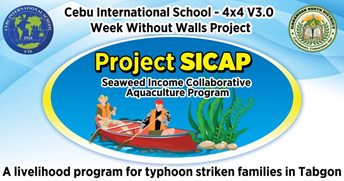 Caramoan Bicol
Caramoan Bicol
CIS PROJECT SICAP: Seaweed Income Collaborative Aquaculture Program
During our last Week Without Walls in February, the 4×4 Group worked together to come up with a livelihood program for the victims of the super typhoon in Bicol. Combining the efforts of the entire school to extend help to the super typhoon victims, we developed the Project SICAP for the chosen families. We would like to thank our community for all of the donations that were made. The next step for CIS is to bring students to this community and let the families teach our students the process behind aquaculture and seaweed production.
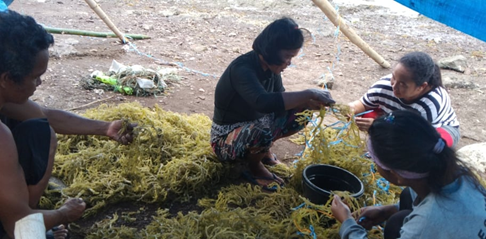 Here’s what Ms. Jean Naval our community leader there in Caramoan has to say;
Here’s what Ms. Jean Naval our community leader there in Caramoan has to say;
“We make a living by what we get; we make a life by what we give.” – Sir Winston Churchill
A life-given gift to share despite the creeping difficulty brought by pandemic. Devastating leftovers of typhoons brought tears to the 7 families of Campo St., Tabgon, Caramoan, Camarines Sur. Many years living along the coastline and fed from fishing kept them living, but after the typhoon, nothing was left, including their source of income.
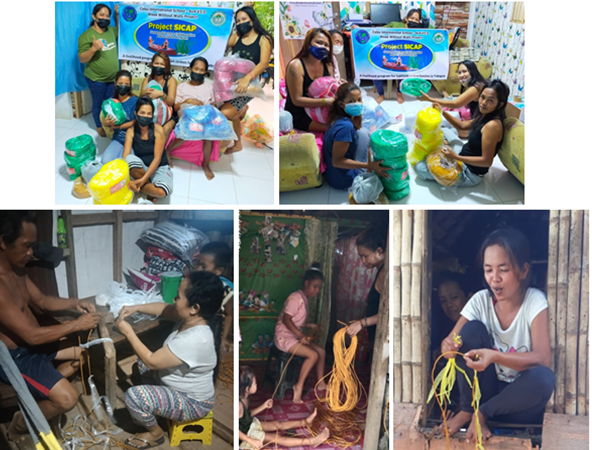 A spring of hope once again was seen on the horizon when, on a day of November just after the typhoon, Cebu International School contacted me. This started the journey and opened the door for new beginnings through Project SICAP (Seaweed Income Collaborative Aquaculture Program), a joint Livelihood project that aims to help the 7 families to rise again.
A spring of hope once again was seen on the horizon when, on a day of November just after the typhoon, Cebu International School contacted me. This started the journey and opened the door for new beginnings through Project SICAP (Seaweed Income Collaborative Aquaculture Program), a joint Livelihood project that aims to help the 7 families to rise again.
The agar farming has already launched and we look forward to the successful process and equitable income for the 7 families.
College/Careers Counselor Corner
by Ms. Jenny Basa, College/Careers Counselor
Tip of the Week:
School Profile
When applying to a university, one requirement that may be required is the School Profile. This is a document created by the school that contains relevant information about the school’s curriculum, grading system, accreditations and a brief history. It also includes a list of the universities the graduates have been accepted to. This document is updated every year and is submitted to universities if required when a student applies for admission. Here is a link to the CIS School Profile 2020-21 which can be accessed on our school website.
Upcoming Virtual Events and Fairs: (students & parents are welcome)
DATE
May 29 Saturday
3:30PM – 7:00 PM
Alumni Chat Series Episode 6: Annyeong Korea!
EVENT (IDP Webinar Series)
UK Virtual Fair
LINK to register & view participating schools
To be confirmed (Final date will be sent to interested students)

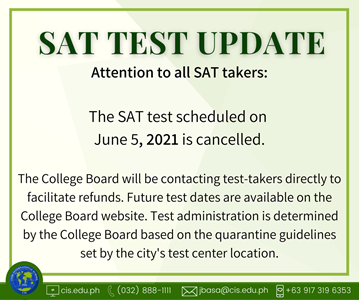



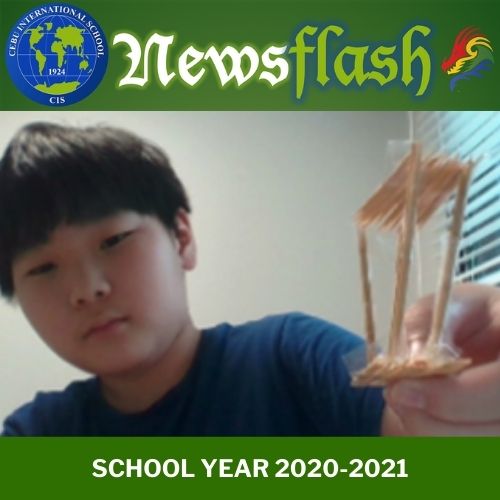
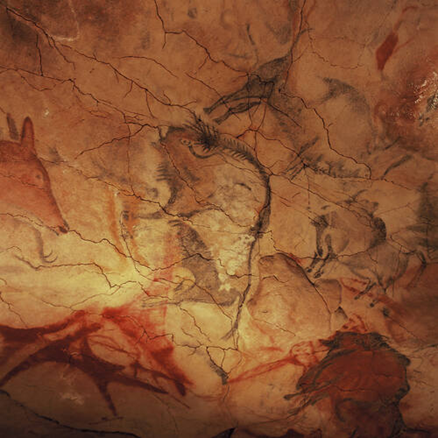 Source:
Source: 